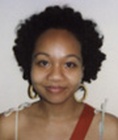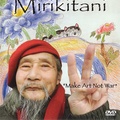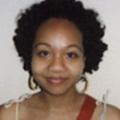>> Part 1
Part 2: East Coast Style
When I decided to attend college in New York, I knew there would be a period of adjustment after leaving my family and home state of California, but I did not anticipate the type of culture shock that ensued. This culture shock did not arise from becoming accustomed to pedestrian life, from adjusting to life in a densely populated metropolis, or from the challenge of making new friends at a new school. Instead, my culture shock resulted from the realization that New York was indeed diverse, but in ways remarkably different from Los Angeles. The way that people interacted, and more specifically, the lack of meaningful interaction between people of different cultures, felt foreign to me. There was ethnic diversity, but based on my limited experience (as a student, a non-native New Yorker, and as a Manhattan dweller who rarely ventured to other boroughs), each ethnic group seemed segregated from the others. As a result, I could not see where I fit within the culture of New York or its history, and that left me feeling displaced. In an attempt to connect with my new surroundings, I actively sought out community.
I initially felt homesick often. I missed the mishmash of cultures with which I was raised. I had frequent cravings for easily accessible, tasty, and inexpensive Mexican food (L.A.’s soul food). I would fondly remember the familiar faces and foods of the small, family-owned restaurants and stores I frequented in Little Tokyo and in the San Gabriel Valley. Sure, New York accents were fun at first, but after a while, I began to miss the laidback way people talked back home. I even missed the rough-and-tumble cholo culture, nonexistent in New York. Most of all, I missed not having to constantly explain myself — the luxury of having people who understood what I was talking about when I made references to parts of Los Angeles or to local bands that my friends and I followed. I was probably more homesick for an understanding of where I was “coming from” than I was for any actual place.
One day, after having a difficult time locating a Japanese grocery store and realizing I had no “Japantown” to turn to, it suddenly hit me how different the nature of the Nikkei community in New York is, compared with California. While California’s Japanese Americans often have roots in the U.S. dating back to the 1800’s, many of New York’s Nikkei are Shin-Issei (who immigrated to the U.S. in the years following World War II) and their descendants. In New York there is no dedicated Japantown, established in the early 20th Century, as there are in multiple locations in California. There are pockets of Japanese businesses and populations, but again, the nature of this community was unfamiliar to me. I did not see where I fit in, and I could not understand how to connect with it. Eventually, a longing for the Japanese American culture I grew up with in addition to my budding curiosity about the history of my Asian ancestors led me to take a few courses in Asian/Pacific/American studies.
The bad memories of my high school experiences with the Pacific Asian Club were still so powerful that when I finally built up the courage to take a course in Asian and Asian American Contemporary Art, I felt shy and awkward, transported back to ninth grade. I self-consciously imagined that everyone was staring at me, wondering, “Why is she in this class?” When a professor asked why I chose to take the class, I defensively replied, “because my mom is Japanese American.” In time (and after a few more classes), I grew more comfortable and lost the chip on my shoulder. I fed my growing interest in Asian American history and the Asian American community in New York by taking more A/P/A studies classes, eventually earning a minor in the subject.
History became interesting to me when I finally discovered my place within it. My amazing A/P/A studies professors (Margo Machida, Angel Velasco Shaw, Anne-Marie Tupuola, Jack Tchen, Jason Kao Hwang) were not content to simply rehash the past — they strongly encouraged us to create, shape and preserve our own histories. In highly interactive class formats, we were active participants doing in-depth research, meeting with cultural activists, conducting oral history projects, and working on projects of our own. I learned about my Japanese American forebears on the West Coast as I had hoped, but I also gained a better overall understanding of the first waves of immigration, how the Asian American community on the East Coast was formed, the impact of the Asian American Movement, and the vibrant Asian/Pacific/American communities that continue to flourish (from coast-to-coast). As an added bonus, I also met a new group of wonderful, community-minded friends who shared many of my interests. It was a very exciting and inspiring period of time in my life.
My homesick feelings of displacement dissipated once I located untapped sources of community. After becoming more involved with my A/P/A classes, the multiracial student club I started on campus, and the Asian American community in New York, I finally began to feel truly comfortable here. I discovered the warm, welcoming side of the city that I never knew existed. New York had suddenly become my second home, a place where I too belonged.
© 2008 Simone Momoye Fujita





